At present, the battery used in china's market for mobile phones has been from nickel hydride nickel-cadmium battery to lithium battery completed the transition, but most people use lithium batteries method is still in the use of nickel hydride nickel-cadmium battery the old wrong method. This paper details the correct use of the most widely used battery lithium battery, the number of people using the wrong sample statistics, highlighting the mobile phone lithium battery before the correct method of charging.
1. Since its inception in 1990, lithium-ion batteries have developed rapidly because of their excellent performance and have been widely used in society. Lithium-ion batteries quickly took over many areas with advantages unmatched by other batteries, such as mobile phones, laptops, small cameras, and so on, and more and more countries used them for military purposes.
Applications show that lithium-ion batteries are an ideal small green power supply. We often say that the advantages of lithium-ion batteries are for traditional nickel-cadmium batteries (Ni/Cd) and Ni/Mh batteries.
It has the advantages of high working voltage than energy, long cycle life, and low self-discharge rate with no memory effect. At present, the accepted basic principle of lithium battery is the so-called "rocking chair theory". The flushing and discharge of lithium batteries is not the traditional way to achieve the transfer of electrons, as children through lithium ions in the crystal of the layered substance, energy changes occur. In the case of normal flushing and discharge, the access of lithium ions generally only causes the change of layer spacing, but not the destruction of crystal structure, so from the reflection of the flushing and discharge, the lithium-ion battery is an ideal reversible battery.
In the flushing and discharge of lithium ions in the battery positive and negative pole round-trip access, is like a rocking chair in the positive and negative pole to shake around, so some people refer to the image of lithium-ion battery rocking chair battery.
2. Mistakes in the daily use of lithium batteries. For the lithium battery "activation" problem, many of the arguments are: the charging time must be more than 12 hours, repeated three times, to activate the battery. This "first three charges to be charged for more than 12 hours" is a continuation of the statement from nickel batteries such as nickel-cadmium and nickel hydride. So this statement can be said to be misinformation at the beginning.
After a sample survey, it can be seen that a considerable number of people are confused about the two battery charging methods. The charge and discharge characteristics of lithium and nickel batteries are very different, and all the serious formal technical information consulted emphasizes that overcharging and over-discharge can cause great harm to lithium batteries, especially liquid lithium-ion batteries.
Therefore, charging is best under the standard time and standard method of charging, especially do not carry out more than 12 hours of extra-long charging.
Usually, the charging method described in the phone's instruction manual is the standard charging method that is suitable for the phone. Also, lithium battery phones or chargers automatically stop charging when the battery is fully charged, and there is no nickel charger called a "trickle-" charge that lasts for 10 hours. That is, if your lithium battery is fully charged, it's also white-charged to put on the charger. And none of us can guarantee that the characteristics of the battery's charge-discharge protection circuit will never change and the quality will never change, so your battery will be on the brink of danger for a long time.This is another reason for our opposition to long charging.
3. About the experimental table of lithium-ion battery charge and discharge cycle, the data on cycle life are listed as follows:
Cycle life (10%DOD): 1000 times
Cycle life (100%DOD): 200 times
Where THE DOD is the initials of discharge depth. As can be seen, the number of chargeable and discharge depth are related, and the cycle life at 10% DOD is much longer than that of 100% DOD. Of course, if the relative total capacity of the actual charging: 10 x 1000 x 100 x 200 x 200, the latter's full charge and discharge is still better. But the life of lithium battery is mainly reflected in the charge and discharge cycle, this cycle is an absolute concept, the last use of 30% of electricity, full recent, the next use of 70% of the electricity, and full yin, this is just a charging cycle.
Therefore, or follow the lithium battery inventor's slogan "ready to charge, that is, ready to use" method of using lithium batteries.
4. Abnormal time charging and full use of empty power will cause overcharging and excessive discharge, will cause permanent damage to the positive and negative poles of lithium-ion batteries, from a molecular level, the excessive discharge will lead to the excessive release of the negative carbon lithium-ion and make its chip structure collapse, overcharging will be too much lithium-ion hard into the negative carbon structure, And some of these lithium ions can no longer be released. This is why lithium-ion batteries are usually equipped with charge-discharge control circuits. Li-ion batteries generally come with management chips and charging control chips. Among them, the management chip has a series of registers, there are capacity, temperature, ID, charging status, discharge number, and other values. These values change gradually in use. The main effect of the "use of one month or so should be fully charged" approach in the instructions should be to correct the improper values in these registers so that the battery's charging control and nominal capacity match the actual situation of the battery. The power statistics chip can sample the battery's charge by recording the discharge curve (voltage, current, time), which is the wh. the value we read in Battery Information. And lithium-ion batteries after multiple-use, the discharge curve is changed, if the chip has not had the opportunity to read the complete discharge curve again, its calculated power is also inaccurate. So we need to fill the chip deep to calibrate the battery.
5. Lithium battery the first three charge scare correct method and daily use of the precautions.
The first three charges when there is no need for extraordinary time charging such as 12 hours to activate the battery, charging circuit is already protected, plugged in is useless.
Avoid full discharge during frequent use (use to black screen power off).
Long-term placement is not used, or frequent lying ready to use after some time, the method is a complete charge and discharge, after which the battery can be ready-to-charge, only after a long period of use need to re-correct again full charge and discharge.
If you want to hold a battery between long and long, it is recommended to charge up to 40% and place it to protect the battery.
6. Finally, the life of lithium battery is mainly reflected in the charge and discharge cycle, this cycle is an absolute concept, the last use of 30% of electricity, full charge, the next use of 70% of the electricity, and full charge again, this is just a charging cycle.


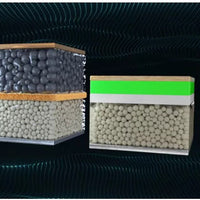

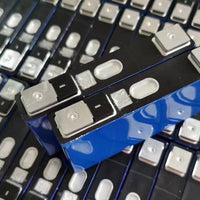
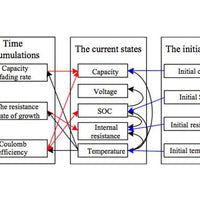
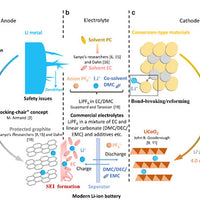
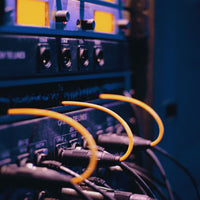
0 comments